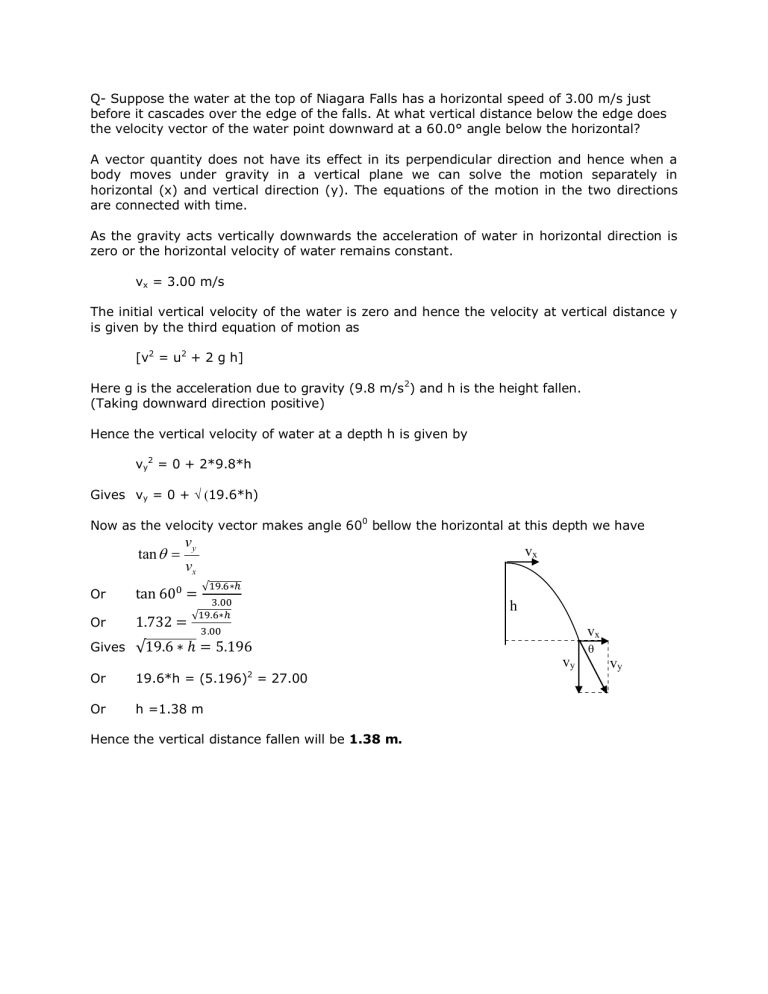tan v v vx vy vy h vx

Q- Suppose the water at the top of Niagara Falls has a horizontal speed of 3.00 m/s just before it cascades over the edge of the falls. At what vertical distance below the edge does the velocity vector of the water point downward at a 60.0° angle below the horizontal?
A vector quantity does not have its effect in its perpendicular direction and hence when a body moves under gravity in a vertical plane we can solve the motion separately in horizontal (x) and vertical direction (y). The equations of the motion in the two directions are connected with time.
As the gravity acts vertically downwards the acceleration of water in horizontal direction is zero or the horizontal velocity of water remains constant. v x
= 3.00 m/s
The initial vertical velocity of the water is zero and hence the velocity at vertical distance y is given by the third equation of motion as
[v 2 = u 2 + 2 g h]
Here g is the acceleration due to gravity (9.8 m/s 2 ) and h is the height fallen.
(Taking downward direction positive)
Hence the vertical velocity of water at a depth h is given by v y
2 = 0 + 2*9.8*h
Gives v y
= 0 + 19.6*h)
Now as the velocity vector makes angle 60 0 bellow the horizontal at this depth we have tan
v y v x v x
Or
Or
Gives
Or
Or
19.6*h = (5.196) 2 = 27.00 h =1.38 m
Hence the vertical distance fallen will be 1.38 m.
h v y v x
v y



